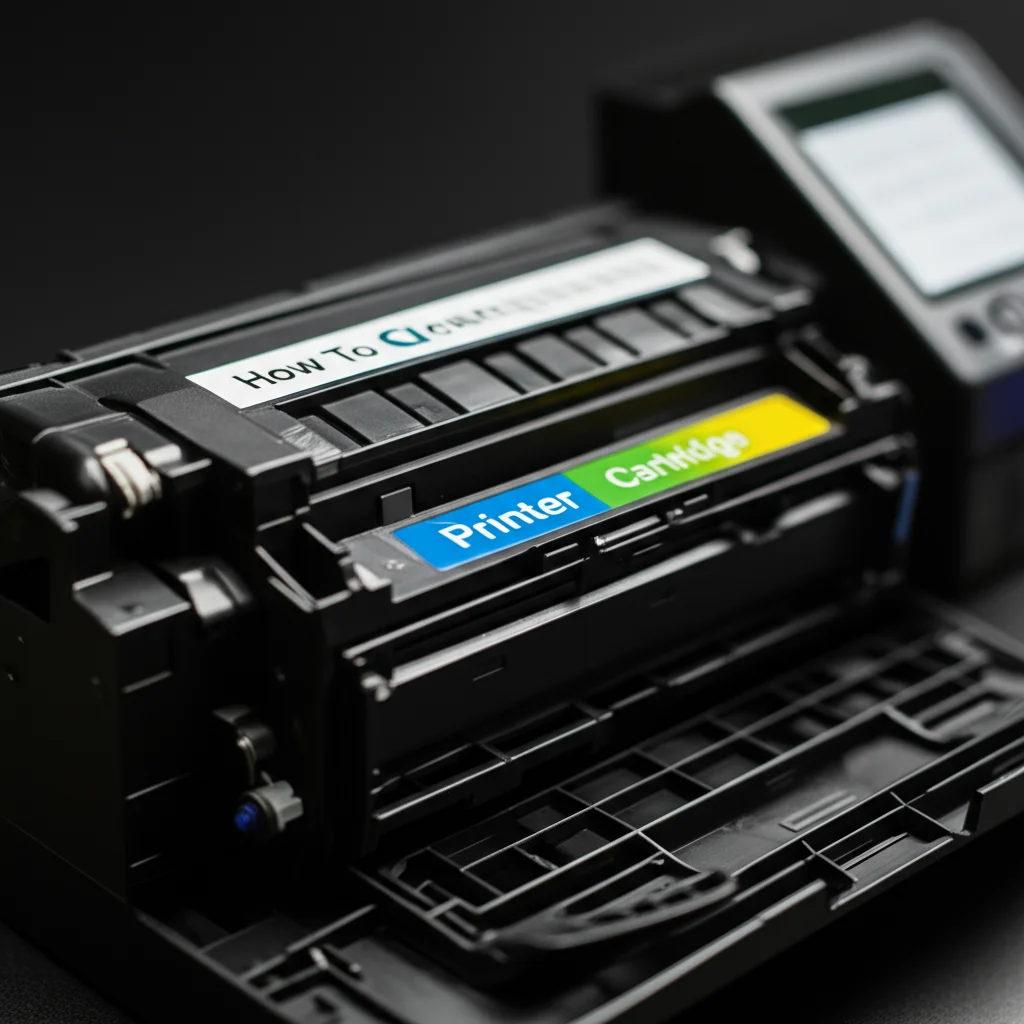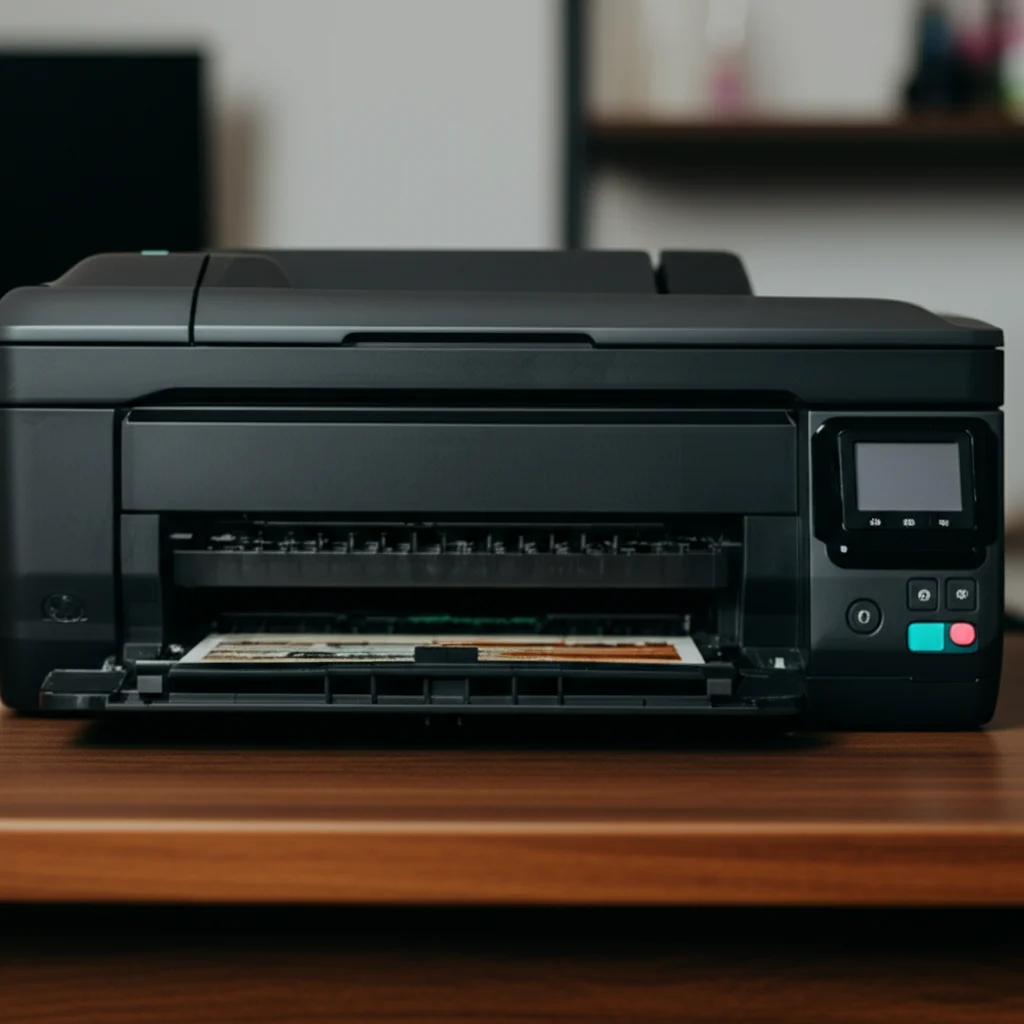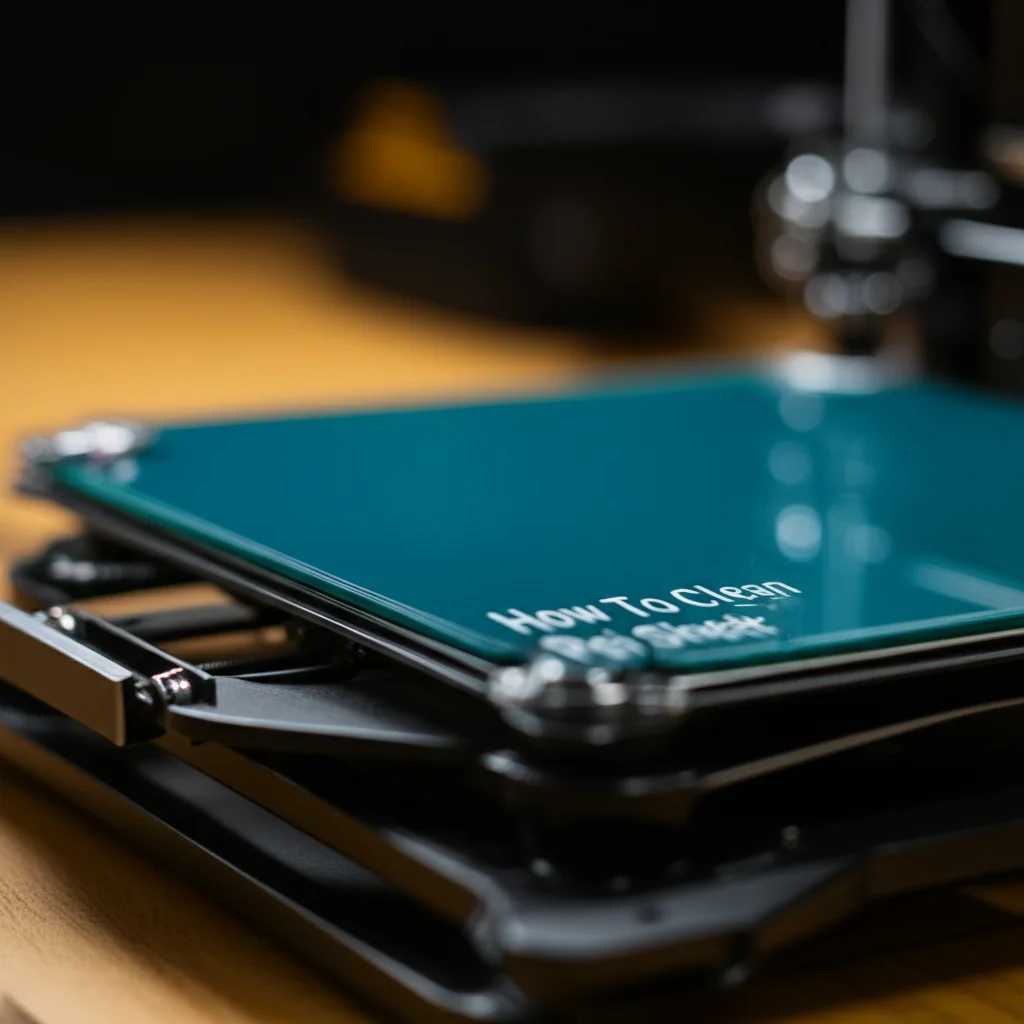· Todd Martin · Printer Maintenance · 15 min read
How To Clean Printer Cartridge

Restore Print Quality: How To Clean Your Printer Cartridge Effectively
Do you see streaks, faded areas, or missing lines in your printed documents? These common issues often stem from a dirty or clogged printer cartridge. Cleaning your printer cartridge can restore print quality and save you money on replacements. This guide shows you how to clean printer cartridge types, including inkjet and toner models.
Many people face frustrating print problems. I know the annoyance of a perfectly good document ruined by poor ink delivery. Understanding why these problems occur is the first step toward fixing them. This article covers identifying issues, gathering supplies, and performing physical and software cleaning for different cartridge types. We also discuss preventative care and what to do if problems continue.
Takeaway
- Identify Issues Early: Look for streaky prints, faded colors, or missing lines as signs of a clogged cartridge.
- Use Proper Supplies: Gather lint-free cloths, distilled water or rubbing alcohol, and cotton swabs.
- Clean Safely: Always remove cartridges from the printer before cleaning. Avoid touching electrical contacts.
- Perform Software Cleaning: Use your printer’s built-in utility for a first attempt at fixing clogs.
- Prevent Future Clogs: Print regularly, use quality ink, and store cartridges correctly.
How to clean a printer cartridge: You clean a printer cartridge by first running the printer’s built-in cleaning cycle. If issues persist, physically clean the print nozzles or contacts using a lint-free cloth dampened with distilled water or rubbing alcohol. Always handle cartridges carefully to avoid damage.
Understanding Printer Cartridge Problems and When to Clean
Your printer cartridge is a vital component for good prints. It holds the ink or toner that creates your documents. Over time, these cartridges can develop problems. Ink nozzles might dry out or become clogged with tiny debris. Toner cartridges can accumulate dust or have issues with their drum unit.
You will see several warning signs if your cartridge needs attention. Common signs include horizontal or vertical lines appearing on prints. Colors might appear faded, or specific colors could be entirely missing. Sometimes, blank pages come out when they should have content.
These symptoms mean your printer cartridge is struggling. A clogged nozzle prevents ink from flowing evenly. Dust on a toner cartridge can stop the toner from adhering correctly. Cleaning the cartridge addresses these issues directly. This process improves print quality and extends the life of your cartridge.
Ignoring these signs leads to worse print quality. It can also cause more serious printer damage over time. Regular maintenance, including knowing how to clean printer cartridge elements, keeps your device working well. This saves you money in the long run.
Gathering Your Cleaning Supplies: What You Need
Before you begin to clean printer cartridge components, gather the right materials. Using incorrect supplies can damage your cartridge or printer. Prepare your workspace to prevent messes. A clean, well-lit area works best.
You will need a few simple items for most cleaning tasks. A lint-free cloth is important. Microfiber cloths are ideal because they do not leave fibers behind. Cotton swabs are useful for small areas and delicate parts. Paper towels can be used to absorb excess liquid.
For cleaning solutions, distilled water is often sufficient for ink cartridges. It does not contain minerals that can leave deposits. Isopropyl rubbing alcohol (70% or higher concentration) is also effective for dissolving dried ink. Avoid using tap water, as it contains impurities. Do not use harsh chemicals like acetone or ammonia.
For toner cartridges, you may need a dry, soft brush or compressed air. Toner powder is fine and can spread easily. Always wear gloves when handling toner to avoid skin contact. These basic supplies make the cleaning process safe and effective.
- Lint-free cloths: Microfiber or similar material.
- Cotton swabs: For precise cleaning.
- Distilled water: For inkjet printhead cleaning.
- Isopropyl rubbing alcohol (70%+): For dissolving stubborn ink.
- Protective gloves: Especially important for toner cartridges.
- Paper towels or old newspapers: To protect your work surface.
- Small bowl or shallow dish: For soaking inkjet cartridges.
- Soft brush or compressed air: For toner cartridge cleaning.
General Steps to Safely Clean Inkjet Printer Cartridges
Cleaning an inkjet printer cartridge manually requires care. First, turn off your printer and unplug it for safety. This prevents accidental electric shocks or printer damage. Open the printer cover to access the cartridges. Wait for the carriage to move to the center.
Carefully remove the problematic inkjet cartridge. Most printers have a latch or button to release them. Handle the cartridge by its sides. Avoid touching the gold electrical contacts or the print nozzles. These parts are sensitive and can be damaged by oils from your skin.
Inspect the print nozzles. These are small holes where the ink comes out. You might see dried ink crusting around them. Lightly dampen a lint-free cloth with distilled water or isopropyl alcohol. Gently wipe the nozzle plate in one direction. Do not scrub back and forth. You can also press the nozzle plate onto a damp paper towel for a few seconds to draw out dried ink.
After cleaning, allow the cartridge to air dry completely. This prevents short circuits when you put it back in the printer. Once dry, reinstall the cartridge carefully into its slot. Close the printer cover and power on the device. Run a test print or the printer’s built-in cleaning cycle. This helps to prime the nozzles and check your work.
- Power Down Printer: Unplug it for safety.
- Remove Cartridge: Gently unlatch and pull out the cartridge.
- Inspect Nozzles: Look for visible dried ink or debris.
- Dampen Cloth: Use distilled water or isopropyl alcohol.
- Wipe Nozzle Plate: Gently wipe in one direction. Avoid rubbing.
- Dry Completely: Allow cartridge to air dry.
- Reinstall and Test: Put cartridge back, power on, and print a test page.
Specific Techniques for Stubborn Ink Cartridge Clogs
Sometimes, a simple wipe-down does not fix the problem. Stubborn clogs in your ink cartridge need more direct intervention. One method is gentle soaking. Get a shallow dish and pour about half an inch of distilled water into it. Place the cartridge’s nozzle plate into the water, just enough to submerge the nozzles. Let it soak for 10-15 minutes. This helps dissolve dried ink.
After soaking, remove the cartridge and gently blot the nozzle plate on a clean, dry paper towel. You should see ink lines appear on the paper towel. If you do not see full lines, the clog may still be present. Repeat the soaking process if needed. Make sure the gold electrical contacts do not get wet during soaking. If they do, dry them thoroughly.
For very specific clogs, you can use a cotton swab dampened with rubbing alcohol. Gently dab the print nozzles. Do not push hard into the nozzles. This can damage the internal components. This method is good for precise targeting of visible clogs.
Some printers have detachable print heads. If your printer has a separate print head, you may need to clean it directly. For example, learning how to clean print head on Epson printer involves specific steps for those models. Similarly, users with HP printers might need to learn how to clean HP Deskjet printer heads. These processes target the print head assembly, which often houses the nozzles, rather than the ink tank itself. Always follow your printer’s manual for print head removal and cleaning. After any soaking or detailed cleaning, ensure all parts are completely dry before reinstallation.
- Soaking Method:
- Fill a shallow dish with distilled water.
- Submerge only the nozzle plate for 10-15 minutes.
- Blot dry on a paper towel until ink flows.
- Cotton Swab Spot Cleaning:
- Dampen a cotton swab with rubbing alcohol.
- Gently dab visible clogs on the nozzles.
- Avoid pushing into the nozzle holes.
- Print Head Cleaning (if applicable):
- Consult your printer’s manual for specific instructions.
- Clean detachable print heads as directed.
Cleaning Toner Cartridges: A Different Approach for Laser Printers
Cleaning a toner cartridge is different from cleaning an inkjet cartridge. Laser printers use toner powder, not liquid ink. Toner cartridges are generally less prone to clogging issues like inkjet cartridges. However, they can accumulate toner dust or have problems with the drum unit.
Always wear gloves and a dust mask when handling toner cartridges. Toner powder is very fine and can be messy. It can also irritate your lungs. Start by carefully removing the toner cartridge from your laser printer. Consult your printer’s manual for the correct removal procedure.
Once the cartridge is out, inspect it for loose toner powder. You might see excess toner around the edges or on the drum unit. Do not touch the drum unit directly with your fingers. This delicate roller often has a green or blue surface. Fingerprints can damage it and cause print defects. If your printer uses a separate drum unit, you may also need to learn how to clean Brother printer drum specifically.
Use a lint-free cloth to gently wipe away any visible toner dust from the cartridge housing. For loose powder on the drum unit, use a very soft brush or a dry microfiber cloth. Some people use compressed air, but be cautious. Compressed air can spread toner into the printer’s internal mechanisms, making things worse. If you use compressed air, do so in a well-ventilated area or outdoors. After cleaning, carefully reinsert the toner cartridge into the printer. Run a test print to check the quality.
- Wear Protection: Gloves and a dust mask are essential.
- Remove Cartridge Carefully: Follow printer manual instructions.
- Inspect for Loose Toner: Look for powder on cartridge and drum.
- Clean Housing: Use a dry lint-free cloth to wipe the outside.
- Clean Drum (Carefully): Use a soft brush or dry cloth. Avoid touching with fingers.
- Avoid Spreading Toner: Be cautious with compressed air.
- Reinstall and Test: Secure cartridge, then print a test page.
Performing Software-Based Printer Cartridge Maintenance
Before you manually clean printer cartridge components, always try your printer’s built-in software cleaning utility. Most modern printers have this feature. It’s often the quickest and safest way to address minor clogs or print quality issues. This utility forces ink through the nozzles to clear them.
Accessing this utility varies by printer brand and model. You usually find it in your computer’s printer settings or control panel. For Windows, go to “Devices and Printers,” right-click your printer, and select “Printing Preferences” or “Printer Properties.” Look for a “Maintenance,” “Tools,” or “Utilities” tab. On a Mac, go to “System Settings” (or “System Preferences”), then “Printers & Scanners,” select your printer, and find “Options & Supplies” or “Utility.”
Once you find the maintenance section, look for options like “Nozzle Check,” “Print Head Cleaning,” or “Deep Cleaning.” Start with a “Nozzle Check” first. This prints a pattern that shows which nozzles are clogged. If the pattern is incomplete, run a “Print Head Cleaning.” This process uses ink, so do not run it too often.
If the first cleaning cycle does not fix the problem, you can run it a second or third time. Some printers also offer a “Deep Cleaning” option for more stubborn clogs. Be aware that deep cleaning uses a significant amount of ink. Only use it when standard cleaning does not work. After each cycle, print another nozzle check pattern to see if the quality has improved. This software method is a great first step for resolving most common print problems before manual cleaning.
- First Attempt: Always use software cleaning before manual cleaning.
- Access Utility: Find “Maintenance” or “Tools” tab in printer settings.
- Run Nozzle Check: Identify which nozzles are clogged.
- Perform Cleaning Cycle: Start with standard “Print Head Cleaning.”
- Repeat If Needed: Run cycle 2-3 times, or try “Deep Cleaning.”
- Check Results: Print a nozzle check after each cycle.
Preventative Measures: Keeping Your Printer Cartridges Clean
Cleaning printer cartridges is helpful, but preventing clogs is even better. A few simple habits can extend the life of your cartridges and maintain print quality. These steps reduce the need for frequent manual cleaning. They also ensure your printer is ready when you need it.
Regular printing is one of the best preventative measures. Inkjet nozzles can dry out if left unused for long periods. Try to print at least once a week, even if it is just a small test page. This keeps the ink flowing and prevents it from drying inside the nozzles. Consistent use helps maintain the ink’s fluidity.
Using high-quality ink or toner is another important step. Cheap, generic cartridges might save money upfront. However, they can contain lower-quality ink or toner that clogs nozzles more easily. Invest in genuine or reputable third-party cartridges. These products undergo rigorous testing and are designed to work optimally with your printer.
Proper storage of spare cartridges also makes a difference. Keep unopened cartridges in their original sealed packaging. This protects them from air exposure and temperature changes. Store them in a cool, dark place, away from direct sunlight or extreme heat. Once opened, use the cartridge within a few months. Ink and toner can degrade over time, even if not in use. This preventative care makes a big difference in the long-term health of your printer components.
- Print Regularly: Print at least weekly to prevent ink from drying.
- Use Quality Supplies: Invest in genuine or reputable ink/toner.
- Store Cartridges Correctly: Keep sealed in original packaging, cool and dark.
- Use Opened Cartridges Quickly: Ink/toner degrades over time.
- Maintain Printer Environment: Keep the printer in a stable temperature setting.
Troubleshooting Common Issues After Cleaning Your Printer Cartridge
You cleaned your printer cartridge, but problems persist. Do not worry. This happens sometimes. There are further steps you can take. First, recheck all your cleaning steps. Make sure everything is dry. Ensure the cartridge is seated correctly in its slot. A loose cartridge can cause print errors.
If print quality remains poor, run the printer’s deep cleaning cycle a few more times. Sometimes, stubborn clogs need repeated attempts. Print a nozzle check pattern after each cycle to monitor progress. If the pattern shows improvement, even slight, continue with another cycle.
Consider the age of your cartridge. If it is very old or has been refilled many times, it might be at the end of its life. Cartridges have a finite lifespan, regardless of cleaning efforts. The internal components can wear out. In such cases, replacing the cartridge is the only solution.
If only one color is problematic, focus on that specific color cartridge. Sometimes, one individual nozzle is particularly difficult to clear. If the problem is widespread across all colors, the issue might be with the printer’s print head itself, or even printer rollers. For issues with paper feeding, you might need to investigate how to clean printer rollers. Always consult your printer’s manual or manufacturer support if all else fails. They can offer specific troubleshooting tips for your model. Sometimes, professional servicing is necessary.
- Re-check Installation: Ensure cartridge is firmly seated.
- Repeat Deep Cleaning: Run software cleaning multiple times.
- Evaluate Cartridge Age: Old cartridges may need replacement.
- Isolate Problem: Determine if one color or the print head is the issue.
- Check Other Components: Consider cleaning printer rollers if paper feeds are poor.
- Contact Support: Consult manual or manufacturer if issues continue.
FAQ Section
Q: How often should I clean my printer cartridge? A: Clean your printer cartridge only when you notice print quality issues like streaks or faded prints. Regular preventative measures are more important than scheduled cleaning. Running the built-in software cleaning cycle is a good first step. Avoid excessive manual cleaning, as it can potentially damage the cartridge.
Q: Can I use tap water to clean my printer cartridge? A: No, do not use tap water to clean your printer cartridge. Tap water contains minerals and impurities that can dry and leave deposits inside the delicate nozzles, making clogs worse. Always use distilled water or isopropyl rubbing alcohol (70% or higher) for cleaning.
Q: What if my printer cartridge still doesn’t work after cleaning? A: If your printer cartridge still has issues after cleaning, try repeating the software deep cleaning cycle a few times. The cartridge might be too old or truly empty. Sometimes, the internal print head assembly is faulty. In such cases, replacing the cartridge is usually the next step.
Q: Can cleaning a printer cartridge damage it? A: Yes, improper cleaning can damage a printer cartridge. Avoid touching the gold electrical contacts with your fingers. Do not use harsh chemicals or abrasive materials. Always handle cartridges gently. Pushing too hard on nozzles or submerging the entire cartridge can cause irreversible damage.
Q: Is it different to clean an ink cartridge versus a toner cartridge? A: Yes, cleaning ink and toner cartridges is very different. Ink cartridges (for inkjet printers) use liquid ink and are prone to nozzle clogs. Toner cartridges (for laser printers) use dry powder. Toner cleaning focuses on removing excess powder and avoiding damage to the drum unit, which is highly sensitive.
Q: What are the main signs I need to clean my printer cartridge? A: The main signs that you need to clean your printer cartridge include streaks or lines on printed pages, faded or incomplete text, missing colors, or blank areas on documents. These issues often mean the print nozzles are clogged or the cartridge is having trouble dispensing ink or toner properly.
Conclusion
Learning how to clean printer cartridge components is a valuable skill. It helps you maintain your printer and save money. You can fix many common print quality problems yourself. We covered identifying issues, gathering the right supplies, and cleaning both inkjet and toner cartridges. Remember to use software cleaning utilities as your first line of defense.
Prevention is key to a healthy printer. Print regularly, use quality ink, and store cartridges properly. These simple habits reduce the chances of clogs. If problems persist after cleaning, consider the cartridge’s age or consult your printer’s manual. By taking these steps, you ensure clear, crisp prints every time. Get ready to enjoy reliable printing with well-maintained cartridges!
- printer maintenance
- ink cartridge cleaning
- toner cartridge cleaning
- printer troubleshooting
- print quality issues
- DIY printer repair





